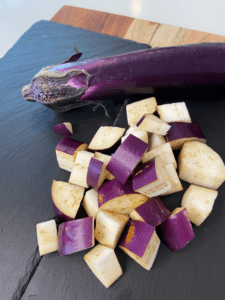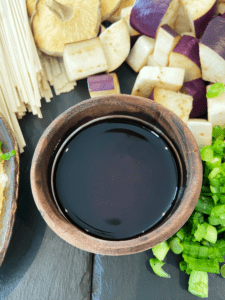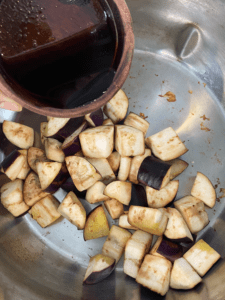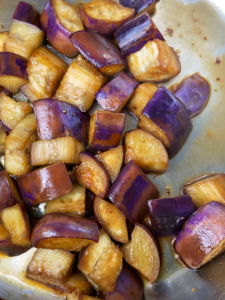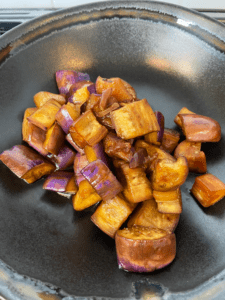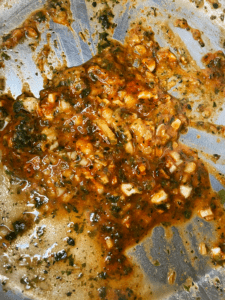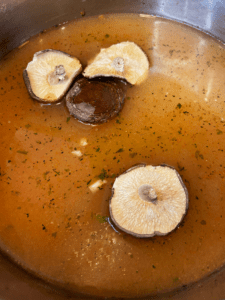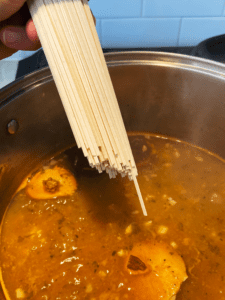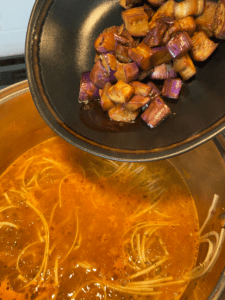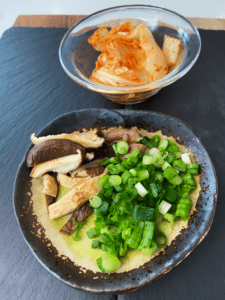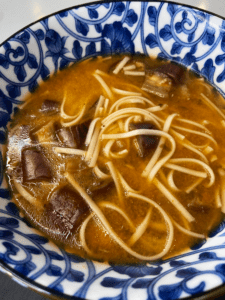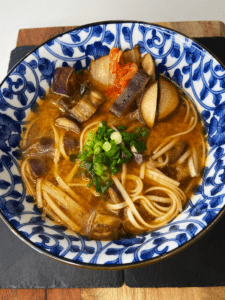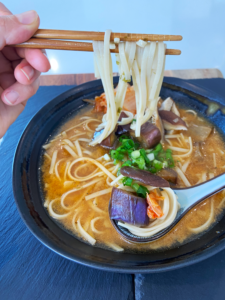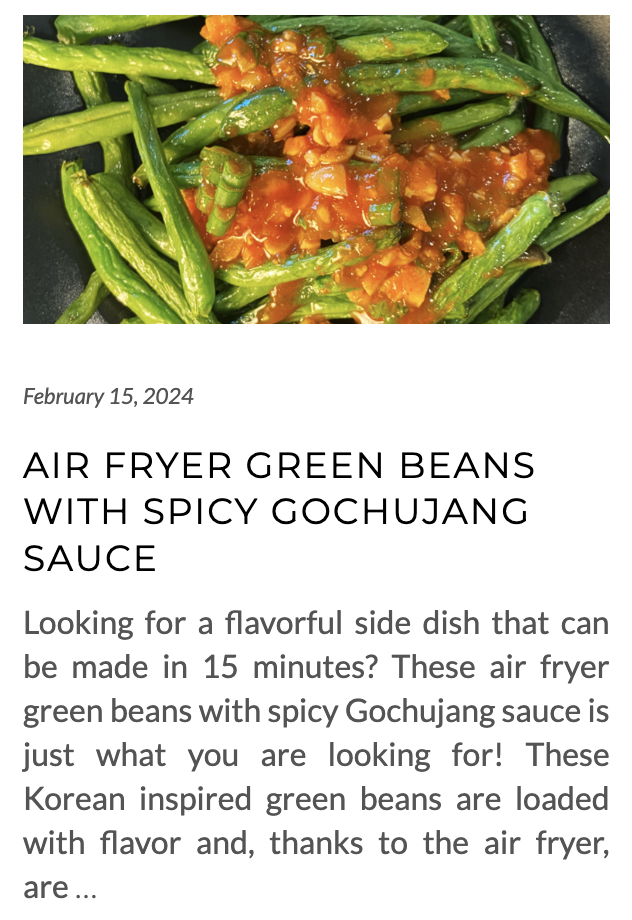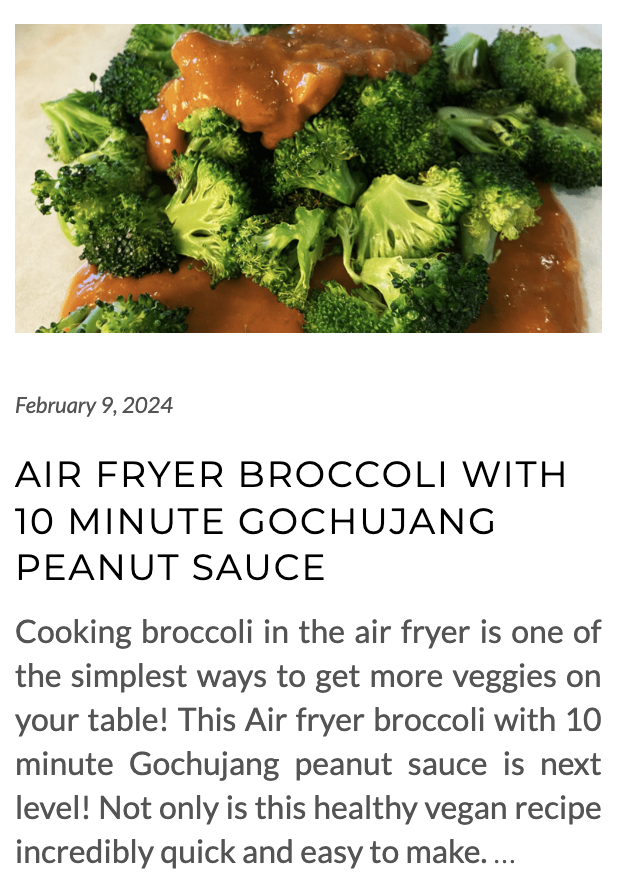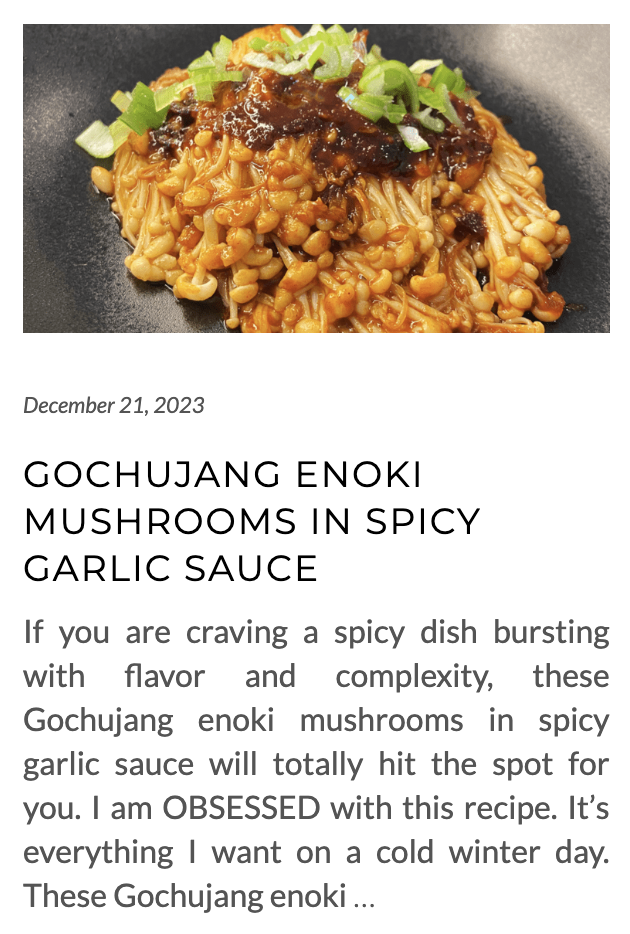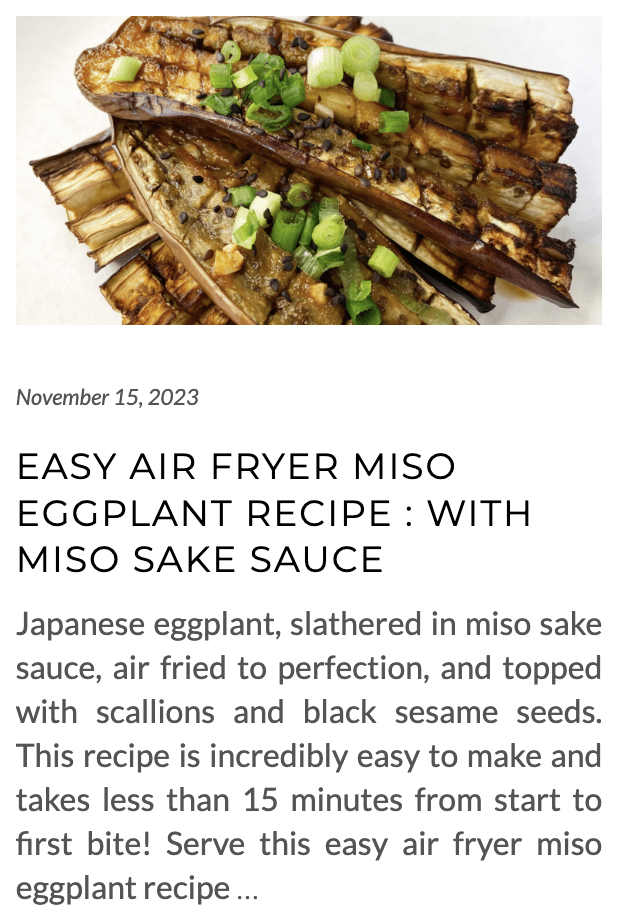Gochujang Miso Udon Noodle Soup with Japanese Eggplant
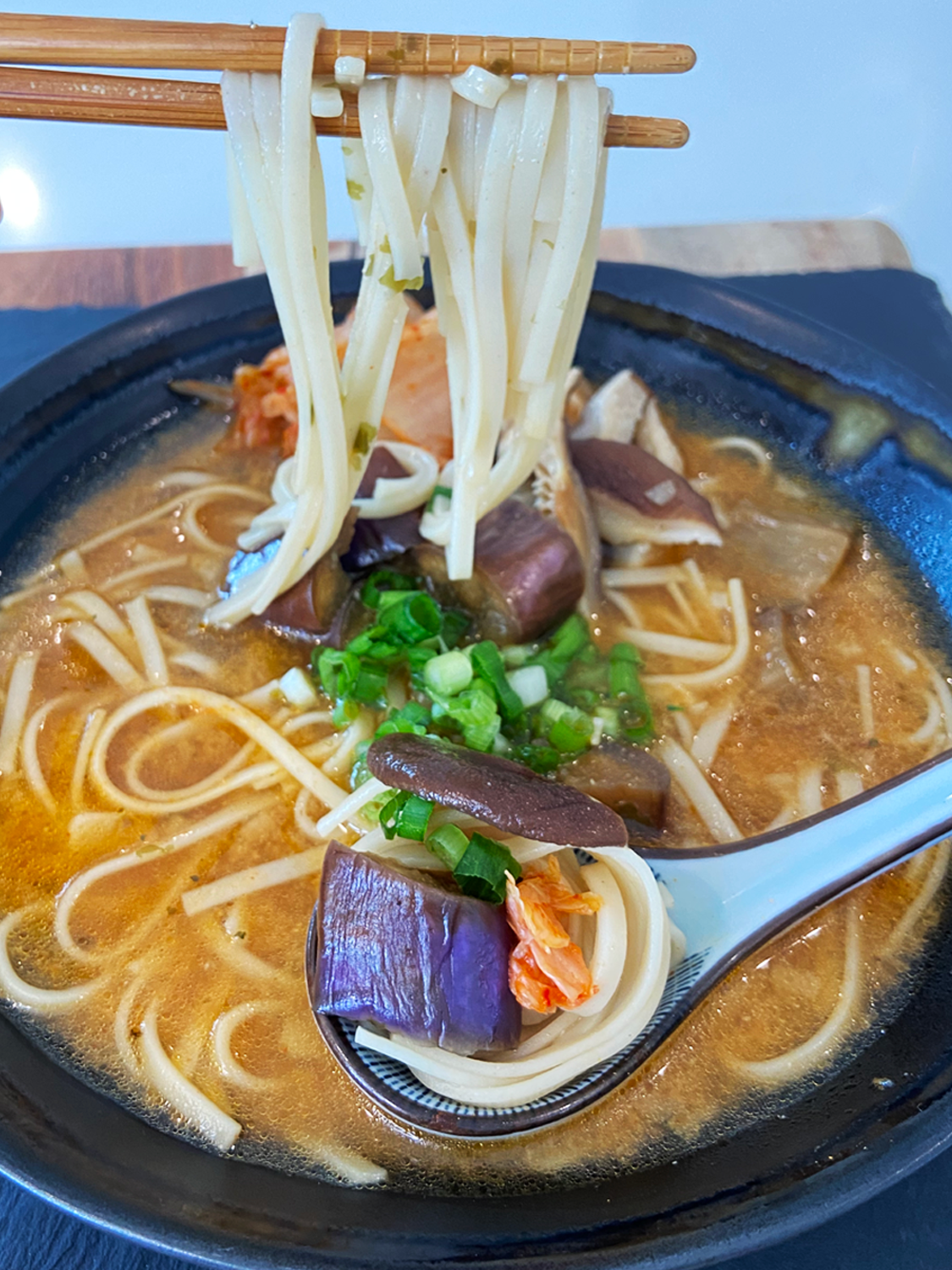
Gochujang Miso Udon Noodle Soup with Japanese Eggplant is a perfect meal for any day! Whether you are fighting off a cold, looking to warm up on a cold day, or just simply want a healthy, delicious meal that is incredibly satisfying…this Gochujang Miso Udon Noodle Soup with Japanese Eggplant is a perfect, easy recipe for any day of the week.
Gochujang Miso Udon Noodle Soup with Japanese Eggplant consists of a savory, umami rich, slightly spicy broth made with miso paste, Gochujang, ginger, garlic, mirin, nori, rice vinegar, soy sauce, toasted sesame oil and dried shiitake mushrooms. This flavorful broth is then loaded with pan-seared Japanese eggplant and udon noodles, and then topped off with kimchi, sliced shiitake mushrooms, and scallions.
This Gochujang Miso Udon Noodle Soup with Japanese Eggplant is loaded with healing, nutrient rich ingredients, making it the perfect sick day soup to boost your immune system. But don’t save this comforting bowl of goodness just for when you’re feeling under the weather…this soup is so simple to make, low in calories and fat, but is incredibly satisfying and delicious.
Jump to Recipe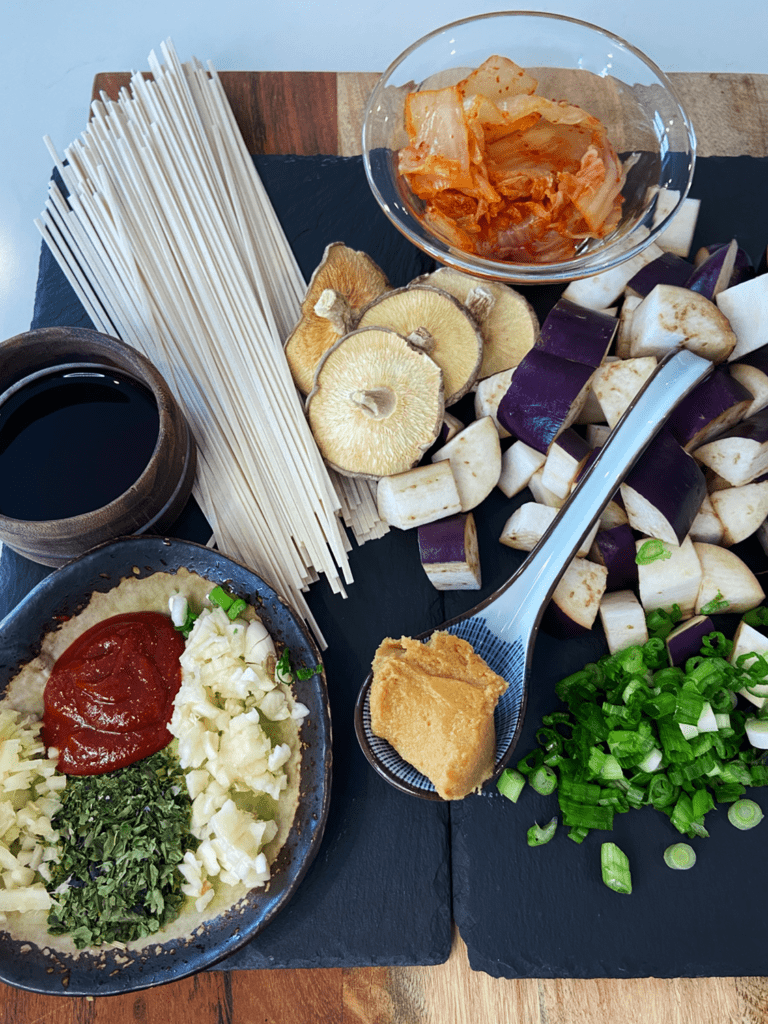
Soba Noodles for Gochujang Miso Udon Noodle Soup with Japanese Eggplant
Soba Noodles are AMAZING and always a staple in my house hold! Why? They are cheap, easy to make, super versatile, and are nutrient dense. Adding soba noodles to your meal is a great way to get some extra protein, 10g per serving! Soba noodles are also an excellent source of fiber, iron and potassium.
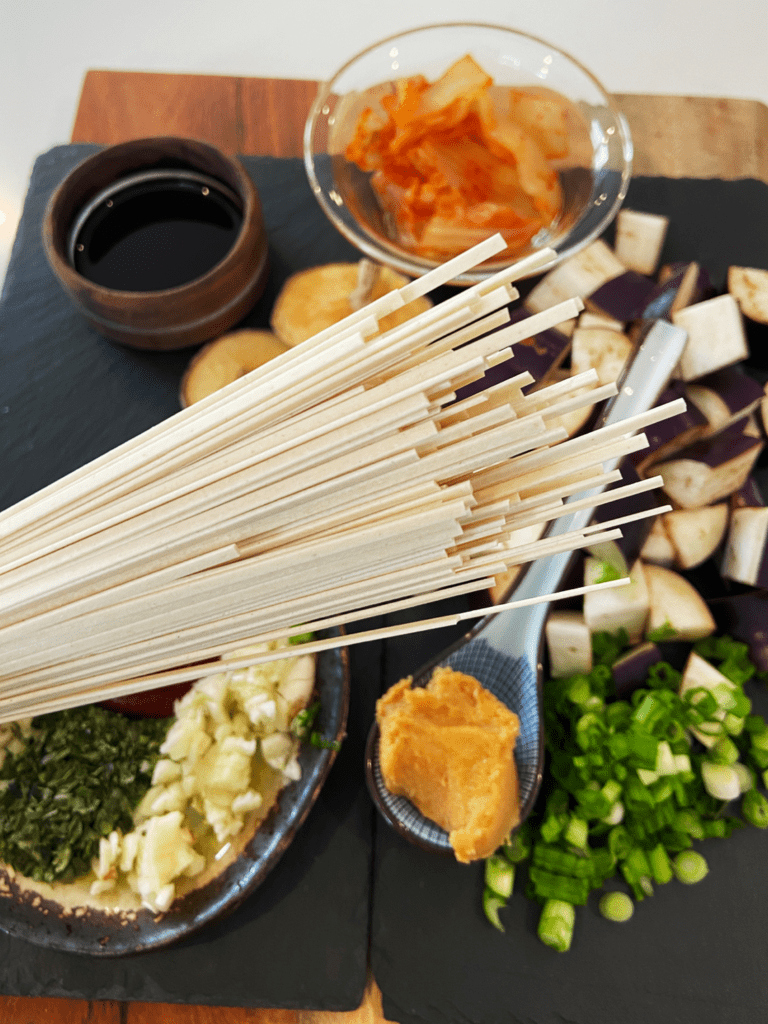
Easy Vegan Gochujang Miso Broth
You can’t have a good soup without a flavorful broth…and this Gochujang Miso broth is KILLER! And best of all, easy to make! Simply combine miso paste, Gochujang, fresh ginger, garlic, soy sauce, mirin, nori flakes, rice vinegar, dried mushrooms, and water. You will add a touch of toasted sesame oil at the end for another layer of flavor. In about 25 minutes, you will have a savory, umami rich, slightly spicy broth that is full of healing, medicinal ingredients!
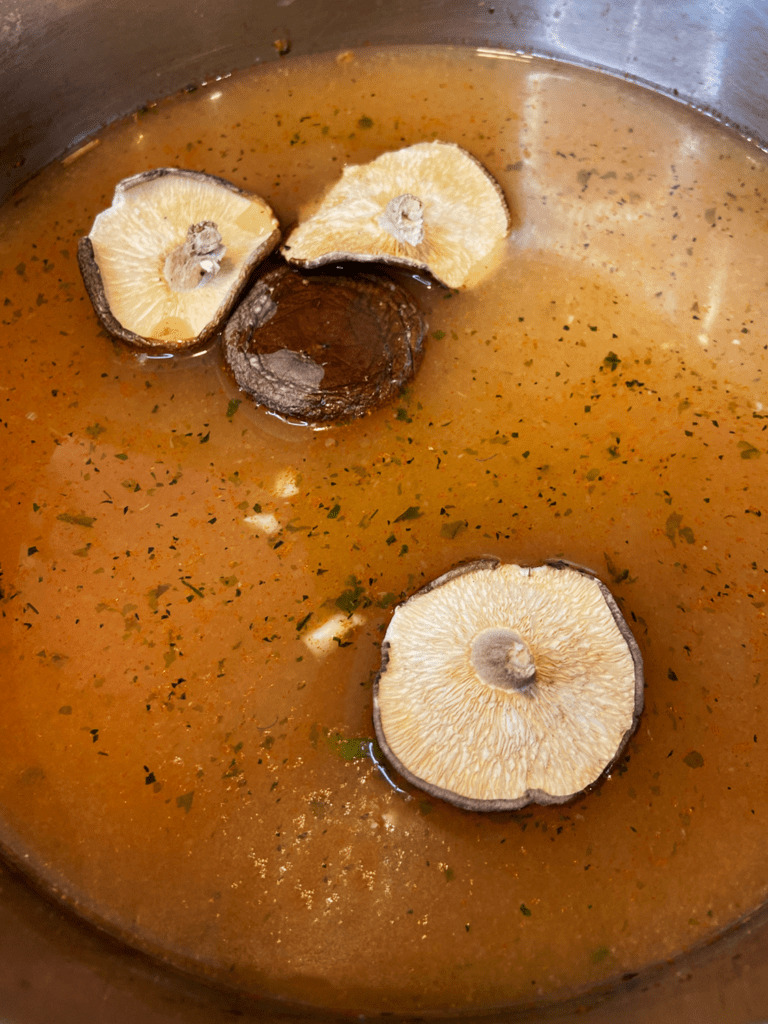
Miso Paste for Miso Soup with Eggplant
Miso paste is also another staple that one should always have in their fridge (in my opinion).
Miso is a paste made from fermented soybeans. Because of Miso’s fermenting process and live bacteria, it is considered a living food (aka contains lots of healthy bacteria for your gut).
Miso’s flavor can be described as savory, rich, salty, with a hint of sweet. Miso can be used as the main base of a dish, such as miso soup, or it can be added to many dishes to help boost flavor and bring more complexity to the table.
For this recipe I used white miso paste, but feel free to substitute red miso paste or any miso paste of your choosing!
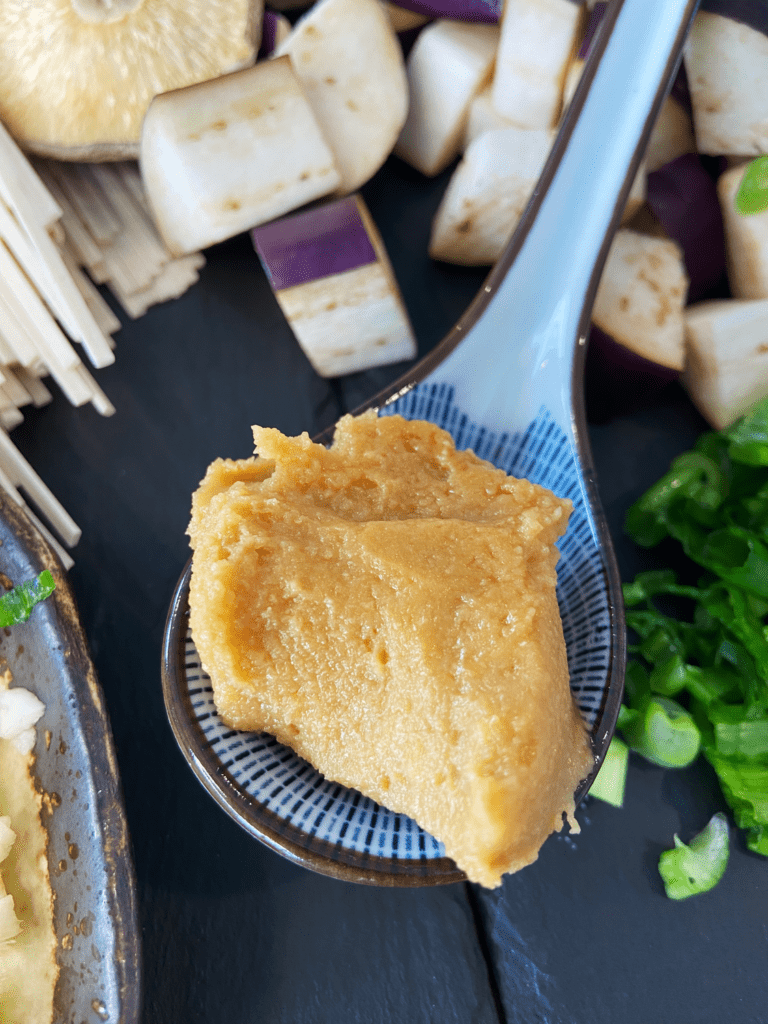
HEALTH BENEFITS OF MISO PASTE
Miso has been enjoyed in Japan since the 1500s and for good reason! Not only does it add a complex, rich, savory flavor to cuisine, it is full of nutrients!
Miso paste contains protein, calcium, manganese, zinc, and vitamin K. Because miso paste is fermented, it is full of good bacteria and is rich in probiotics. This does wonders for your overall health. Miso paste can help improve digestion and can strengthen the immune system. It can also help lower cholesterol and improve you meal health.
Miso paste is high in salt, so you don’t want to over do it. If you are super sensitive to salt, there are low sodium miso paste options available.
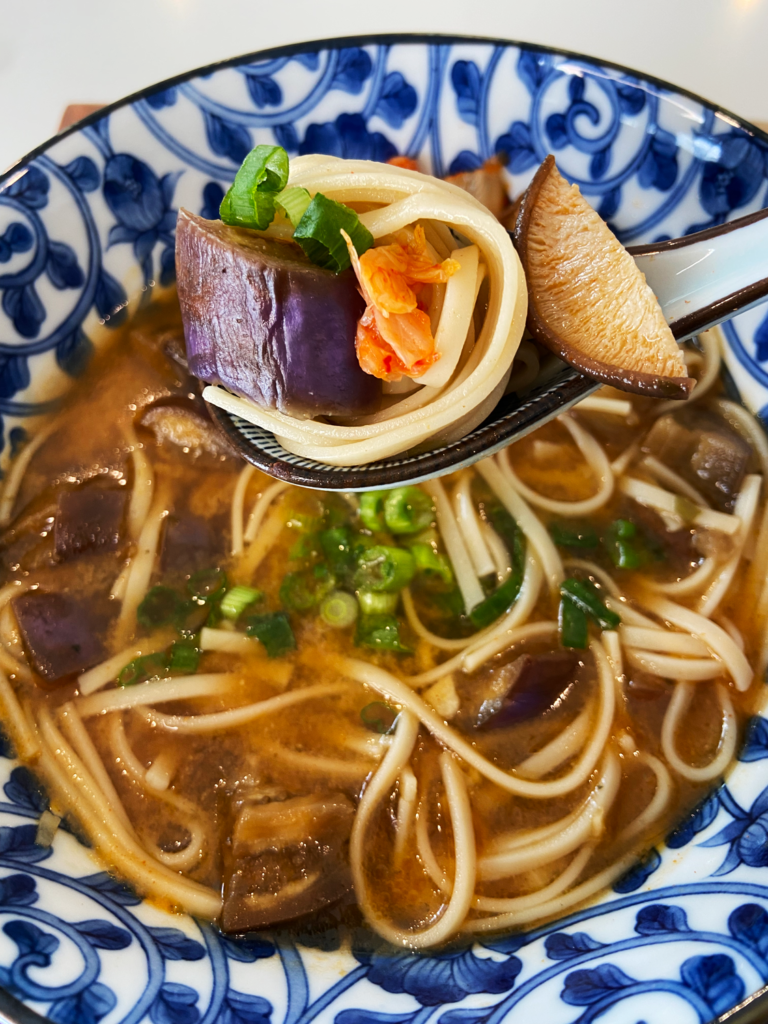
Spicy Gochujang for Miso Soup
If you love spicy food and this is your first experience with Gochujang, you’re in for a treat! Gochujang is a spicy paste used in Korean cooking. This paste is made from fermented soy beans, rice, chili peppers, and salt. Gochujang can be described as spicy, sweet, and well rounded. It’s comforting, complex flavor is an amazing addition to many dishes.
For this broth you will only be adding a tablespoon of Gochujang paste. So the miso broth will only be slightly spicy. But if you aren’t into spicy food lower the amount or just leave it out.
If you want to make it spicier add more! Chili oil, cayenne pepper, and sriracha hot sauce are also great additions if you want to up the spice level.

Vegan Substitute for bonito powder and dashi stock
A lot of Asian inspired soups, such as miso, will have bonito powder or dashi stock in them. Both of these have fish in them, however. So if you are keeping things completely vegan and plant-based these ingredients are a no go.
Both bonito powder and dashi stock bring a complex, umami rich, seafood flavor to a dish, so finding a substitute was important. To bring a similar flavor to a dish, I always add kelp flakes. Kelp flakes are seaweed and are absolutely perfect for adding a vegan seafood flavor to any dish!
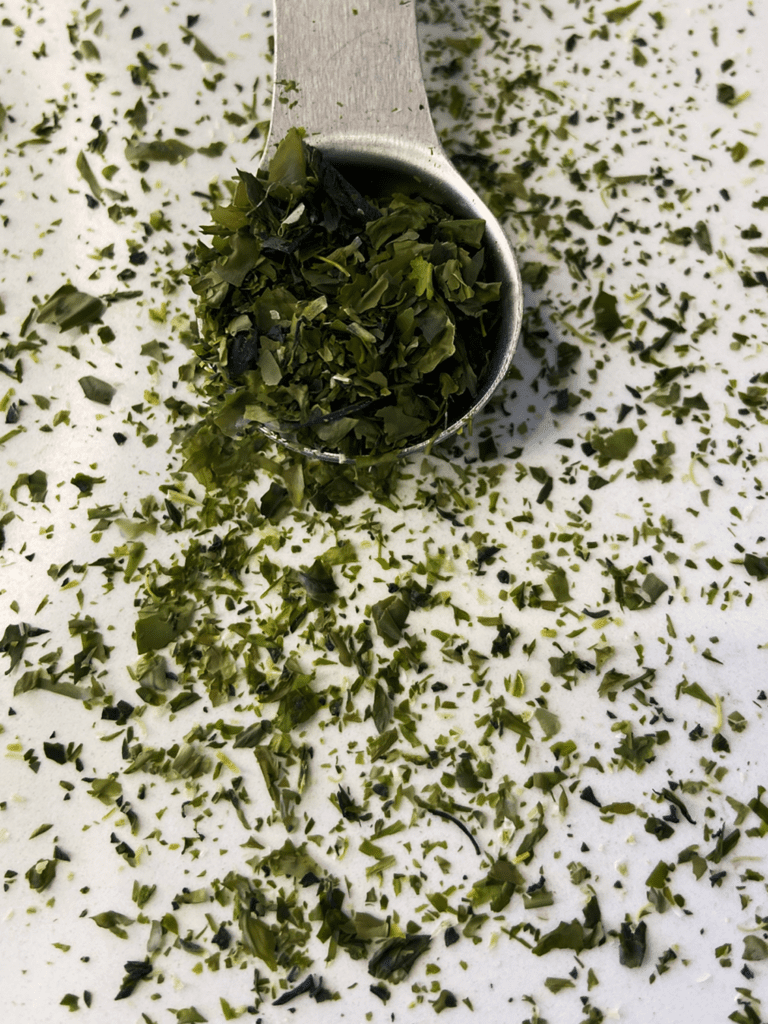
How to make Gochujang Miso Udon Noodle Soup with Japanese Eggplant
This spicy Miso soup with eggplant is so incredibly easy to make…you just need one pot and 30 minutes! Here’s how!
Start with the Japanese Eggplant
To make this soup you want to start with the eggplant. You will begin by pan-searing it with half of your liquid seasoning in your soup pot.
To do this, simply chop up the eggplant into pieces about 1 inch by 1 inch.
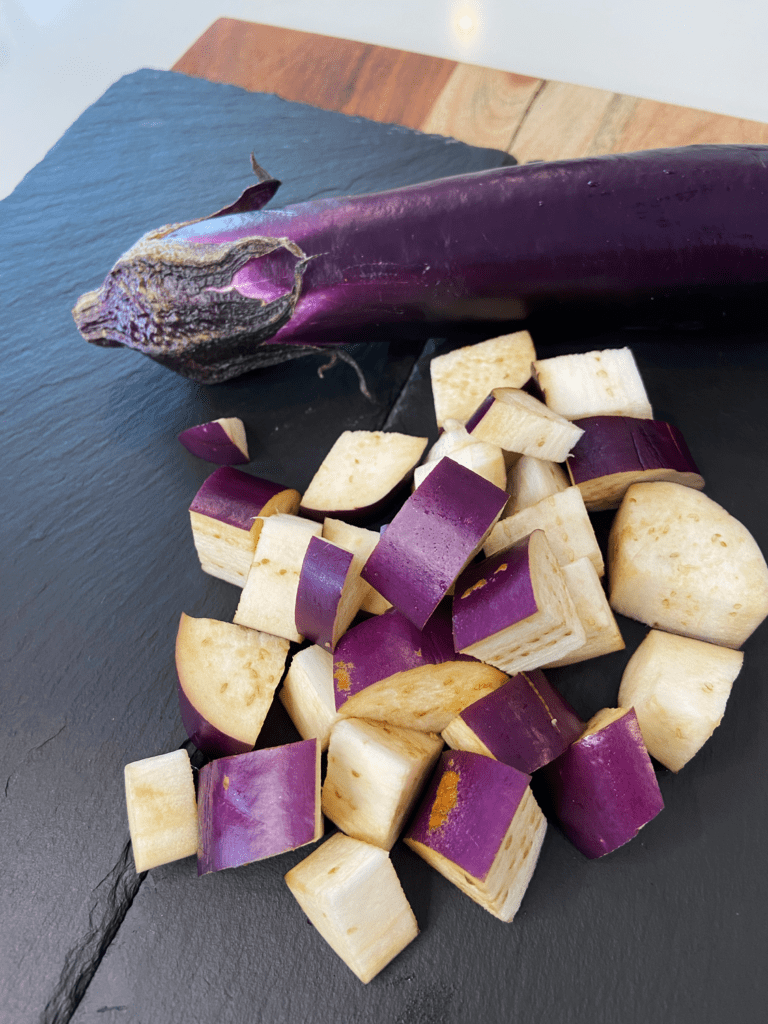
Next you will make your liquid seasoning mix. Half will be used for the eggplant, half will be added to the stock later. For your liquid seasoning mix, combine 1 tbsp soy sauce, 1 tbsp mirin, and 1 tsp rice vinegar. Mix until evenly combined.
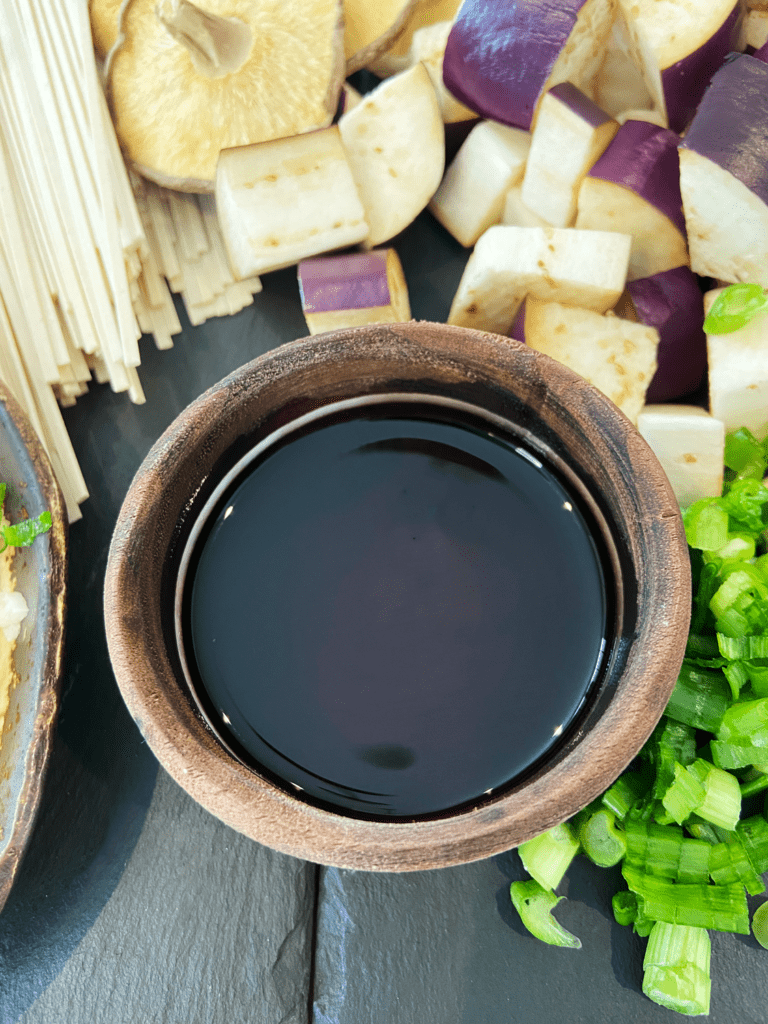
Place the chopped eggplant and liquid seasoning in your soup pot and cook over medium heat stirring often for about 5 minutes. If the liquid absorbs quickly and the bottom of your pan is beginning to brown, add a splash of water as needed.
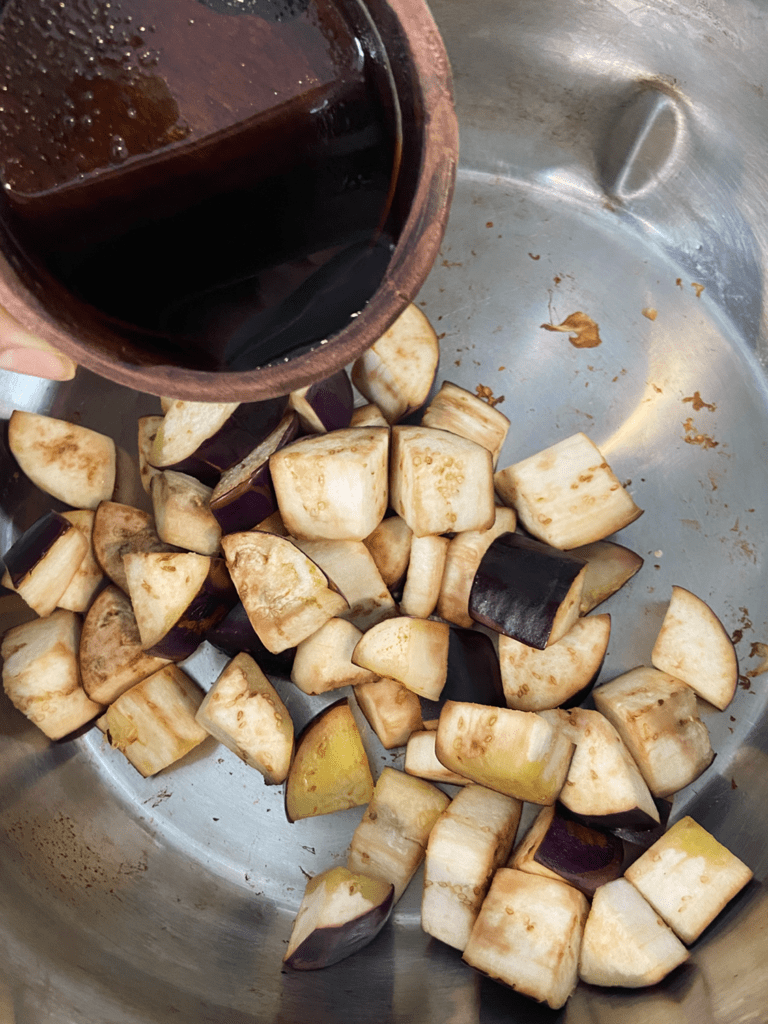
You can use a tablespoon of olive oil if you would like, but I prefer to skip the fat and calories from the oil and just sauté my eggplant with a little water.
After the eggplant has cooked for 5 minutes, add 1/4 cup of water and allow to steam and soften a bit more for 2 minutes. When liquid has absorbed, remove eggplant from pan and set aside.
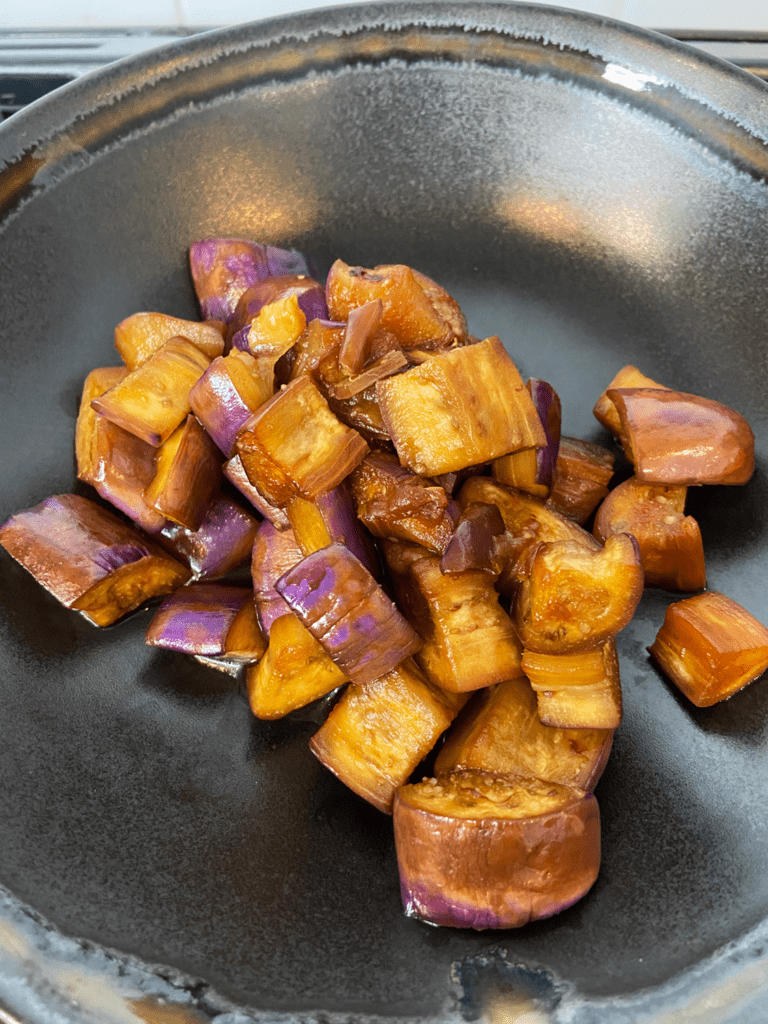
How to make the spicy miso broth
Now it’s time to make the broth! Using the same pot, combine the other half of the liquid seasoning, 1 inch of finely chopped or grated fresh ginger, 2 finely chopped garlic cloves, 1 tbsp miso paste, 1 tbsp nori flake, 1 tbsp Gochujang, and a splash of water. Stir into a paste and allow to cook for 2 minutes.
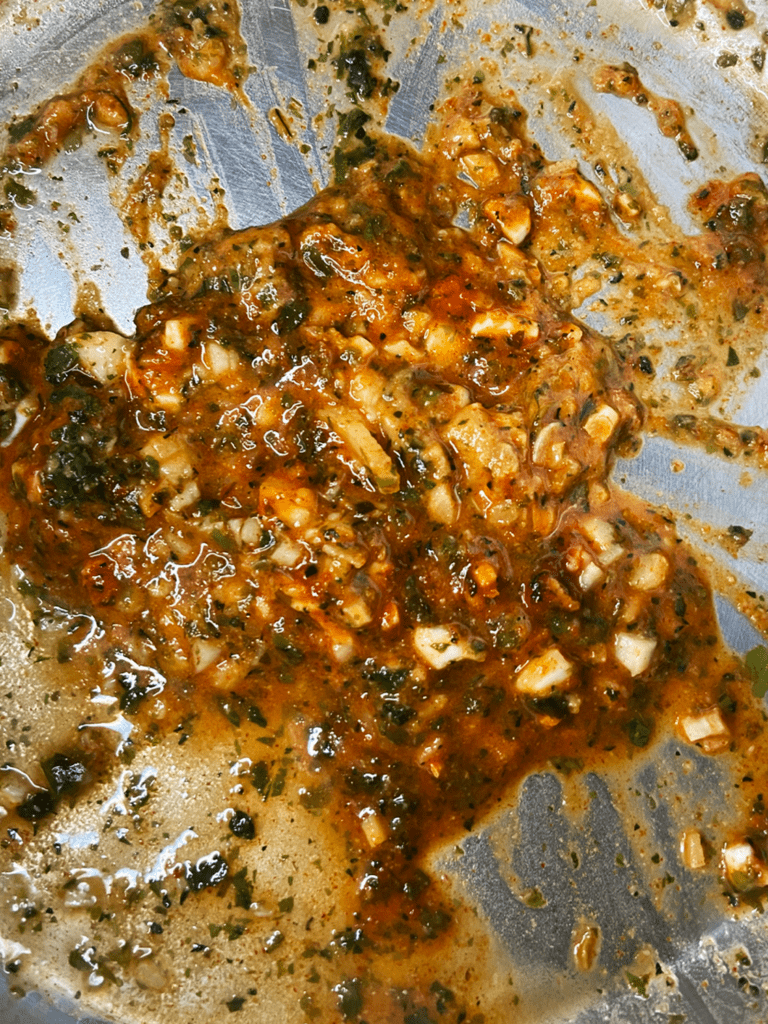
Add the remaining 6 cups of water and 4 dried shiitake mushrooms. Bring broth to a boil and then bring temperature down to medium and allow broth to cook for 10 minutes.
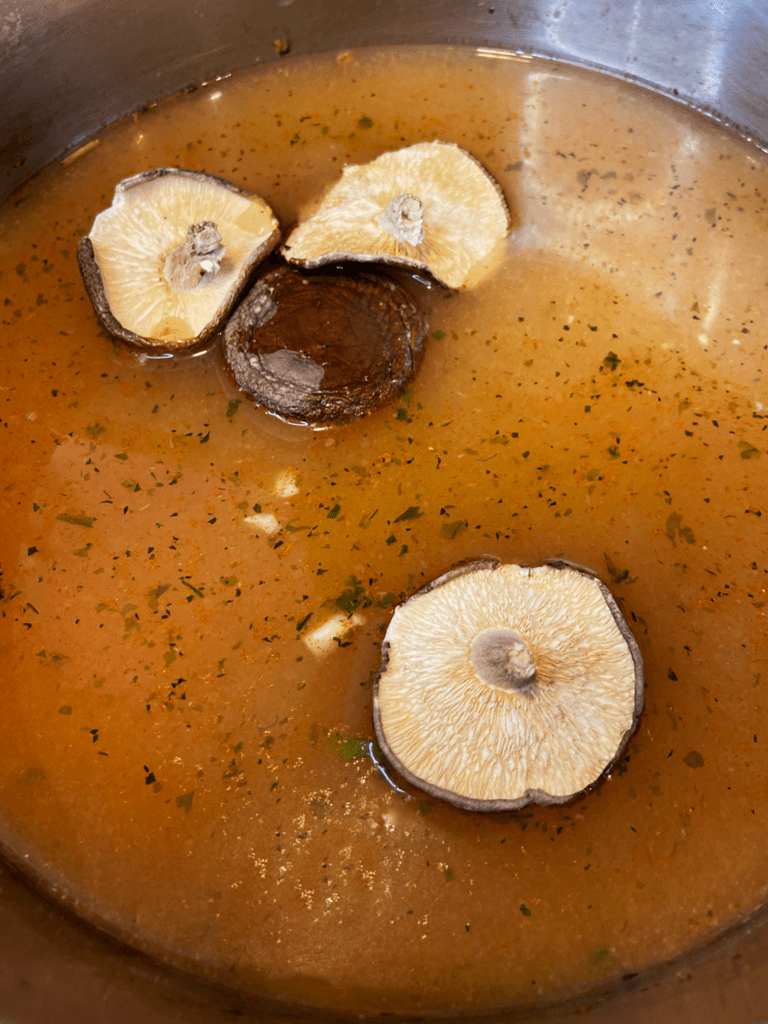
Once broth has infused and reduced for 10 minutes, add 1 serving of udon noodles (about 3oz). Stir in noodles and allow to cook for 5 minutes, or until noodles have reached your preferred texture (some will take longer than others).
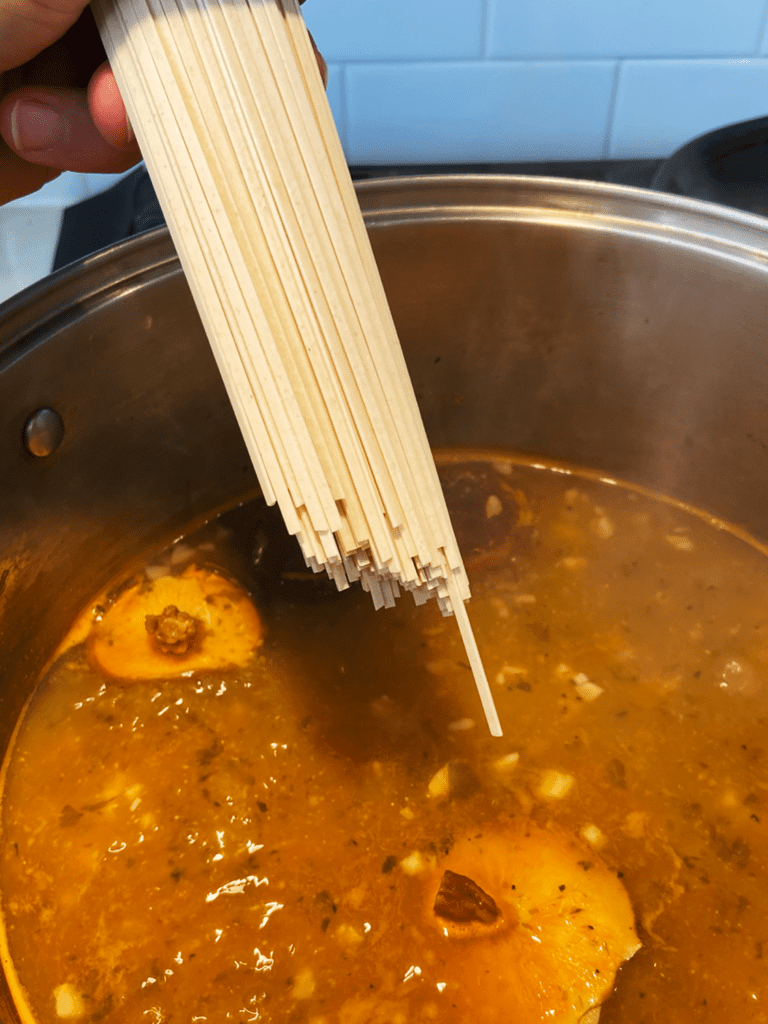
Once noodles have reached desired softness, add 1/2 tsp of toasted sesame oil and the cooked eggplant you had set aside. Remove shiitake mushrooms from your stock and slice them up to be used as a topping.
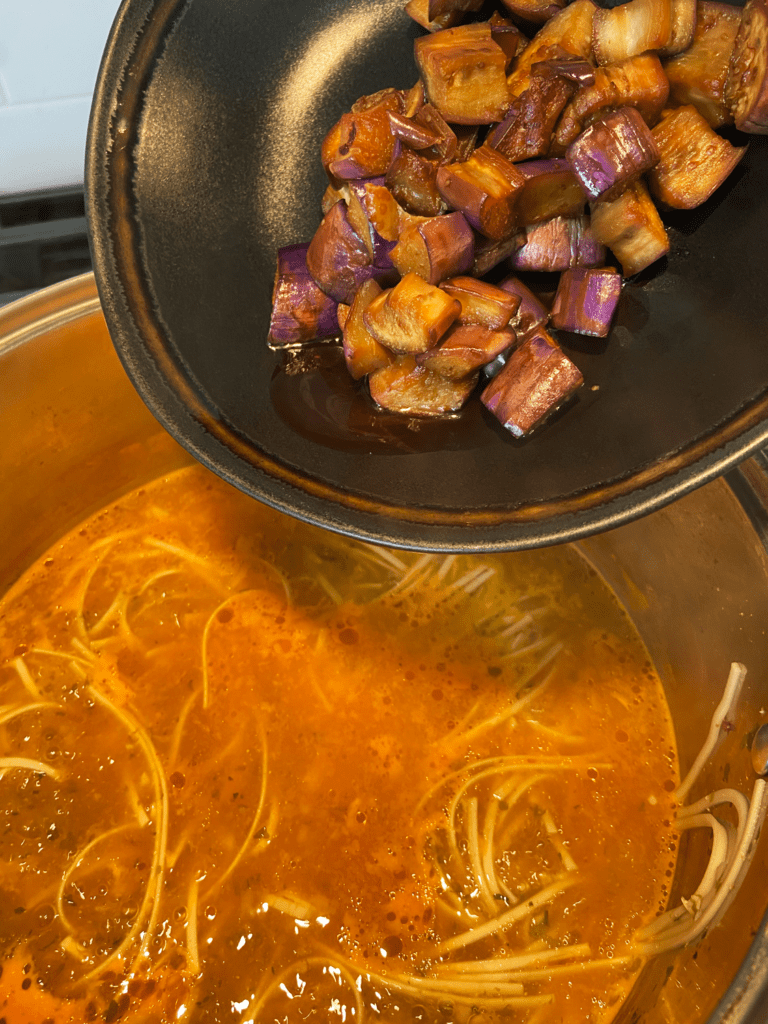
Now the soup is ready to serve! Remove from heat, pour soup into bowls (makes two serving) and top with kimchi, sliced mushrooms and scallion. Serve and enjoy!
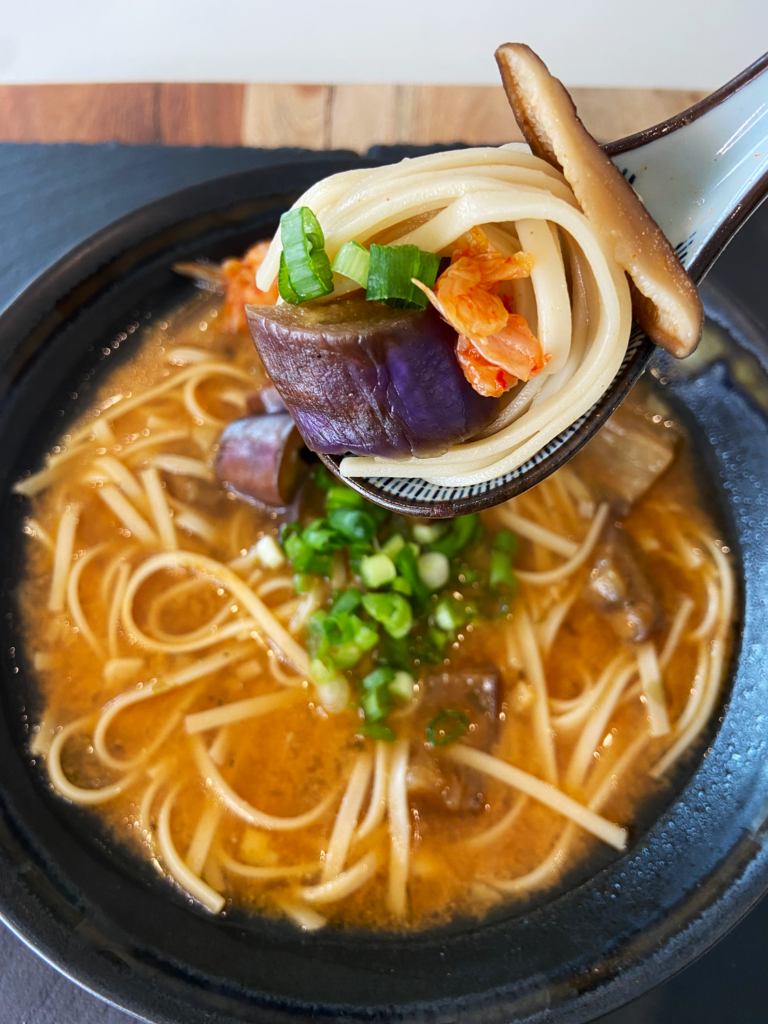
Toppings for Gochujang Miso Udon Noodle Soup with Japanese Eggplant
For this Miso soup with eggplant, I kept the toppings simple. You will slice up the mushrooms that were used to make the stock. Then add kimchi and chopped scallions.
Looking for more toppings? Feel free to add sesame seeds, more nori flakes, chili powder, avocado, sautéed baby Bellas, tofu, edamame….sky it the limit!
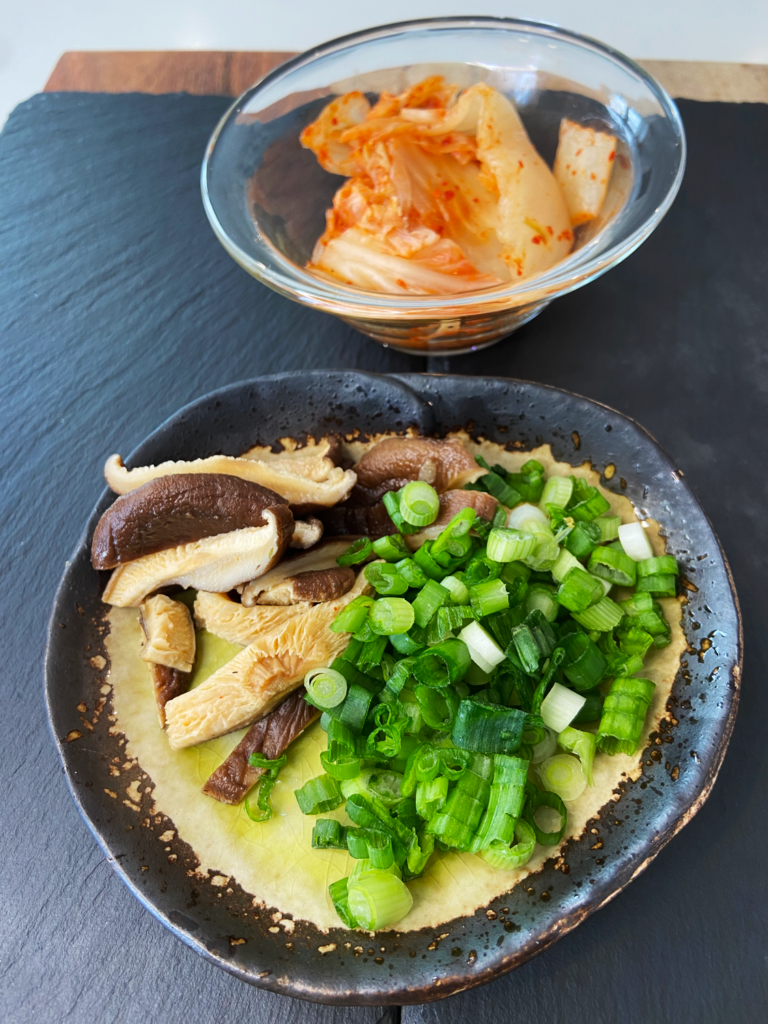
Prep Ahead Miso Eggplant Soup
Gochujang Miso Udon Noodle Soup with Japanese Eggplant is a perfect recipe when you are looking for a meal you can prep in large batches or in advance. Simply make the recipe, but don’t add the toppings. To store properly, separate your broth from the contents of the soup and store separately. This will ensure you noodles do not get soggy and soak up all of the broth. Prepare your toppings and store them separately as well. You can store this Gochujang miso noodle soup in the fridge for up to 5 days.
When you are ready to eat, simply combine and reheat the soup! Add the toppings, serve and enjoy!
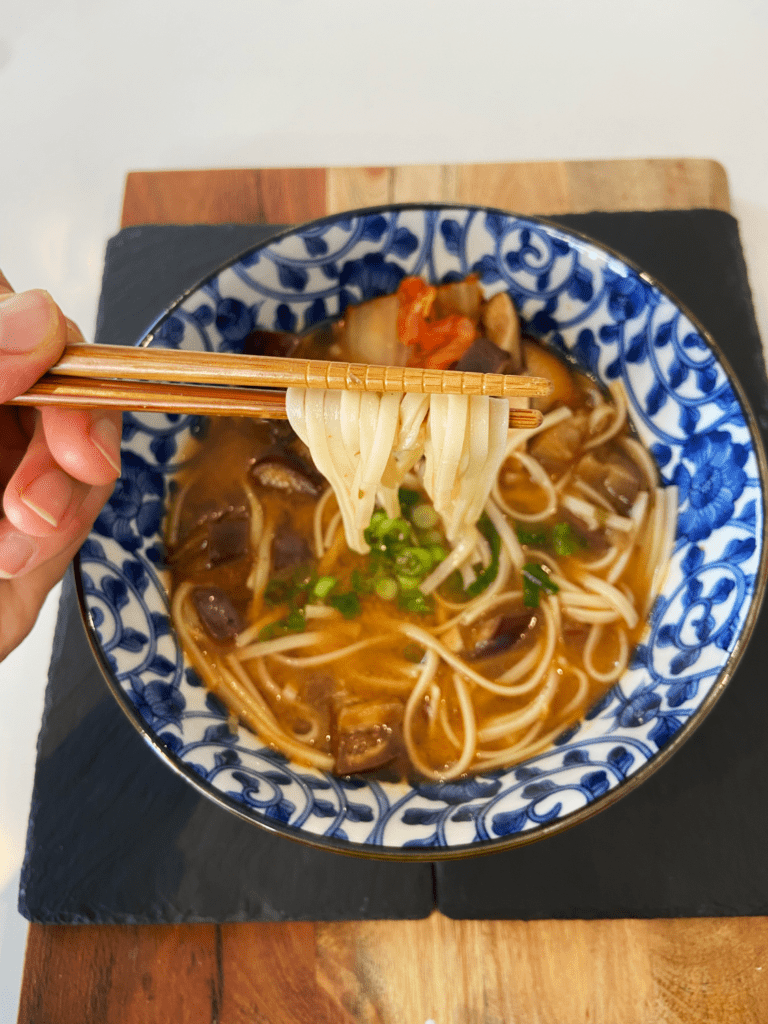
Healthy Vegan Recipe for High Volume Low Calorie Eating
Looking to be full and satisfied for hours, but want to go easy on the calories? This Gochujang Miso Udon Noodle Soup with Japanese Eggplant is PERFECT for just that! This soup is incredibly filling and satisfying…but it is very low in fat. Eating a bowl full of this soup will leave you with a nice full belly, but for a relatively low amount of calories! Mushrooms, kimchi, and eggplant all add a lot of bulk to this dish, but are all incredibly low in calories. Doing your best to stick to high volume low calorie eating?…this soup is perfect for you!
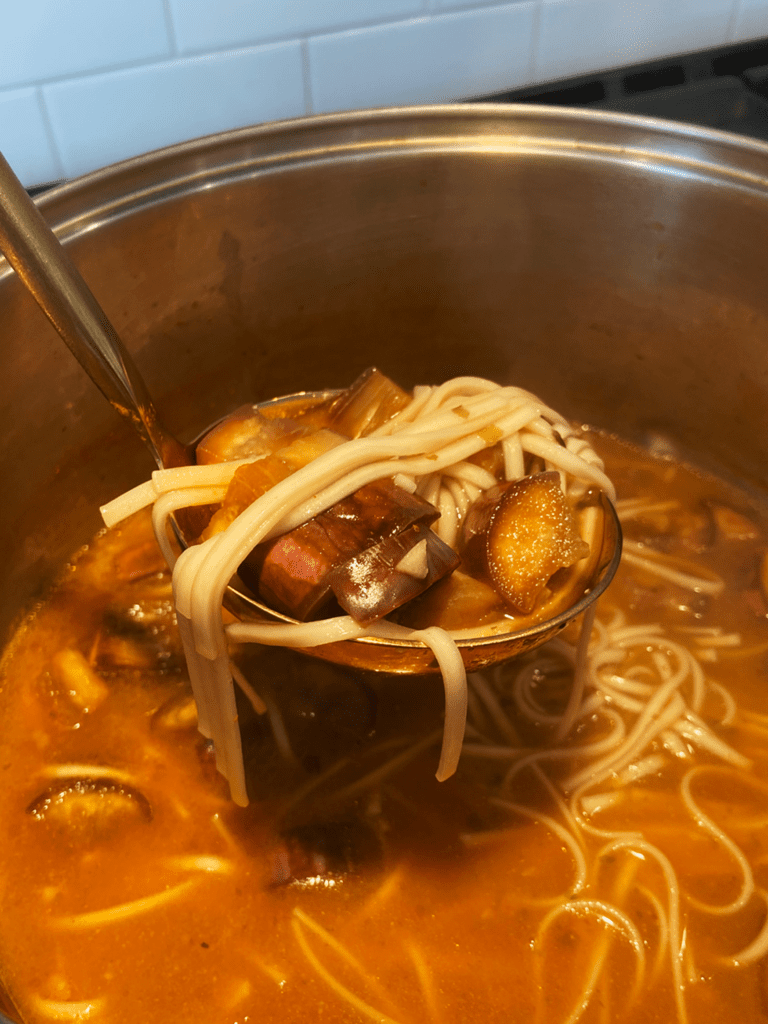
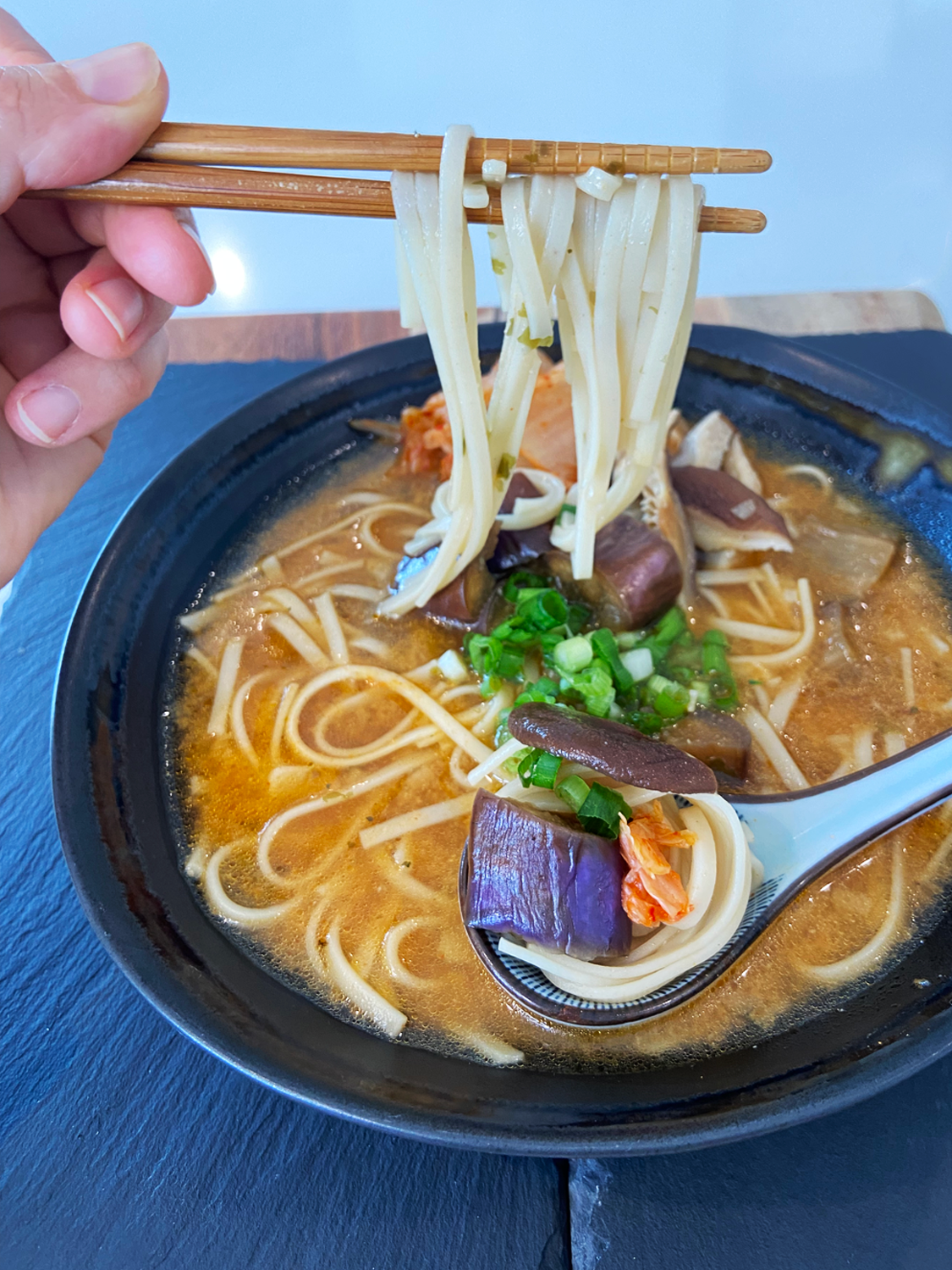
Gochujang Miso Udon Noodle Soup with Japanese Eggplant
Ingredients
Equipment
Method
- Cut up the eggplant into pieces about 1 inch by 1 inch. Set aside

- In a small bowl combine 1 tbsp soy sauce, 1 tbsp mirin, and 1 tsp rice vinegar. Mix until evenly combined.**you will use 1/2 of this liquid seasoning mix for the eggplant and reserve the other 1/2 for the broth

- Place the chopped eggplant and 1/2 of the liquid seasoning in your soup pot and cook over medium heat stirring often for about 5 minutes. **If you liquid absorbs quickly and the bottom of you pan is beginning to brown, add a splash of water as needed. **You can use a tablespoon of olive oil if you would like, but I prefer to skip the fat and calories from the oil and just sauté my eggplant with a little water.

- After the eggplant has cooked for 5 minutes, add 1/4 cup of water and allow to steam and soften a bit more for 2 minutes.

- When liquid has absorbed, remove eggplant from pan and set aside.

- Using the same pot, combine the other half of the liquid seasoning, 1 inch of finely chopped or grated fresh ginger, 2 finely chopped garlic cloves, 1 tbsp miso paste, 1 tbsp nori flake, 1 tbsp Gochujang, and a splash of water. Stir into a paste and allow to cook for 2 minutes.

- Add the remaining 6 cups of water and 4 dried shiitake mushrooms. **Do not add the toasted sesame oil yet

- Bring broth to a boil and then bring temperature down to medium and allow broth to cook for 10 minutes
- Once broth has infused and reduced for 10 minutes, add 1 serving of udon noodles (about 3oz).

- Stir in noodles and allow to cook for 5 minutes, or until noodles have reached your preferred texture (some will take longer than others).
- Once noodles have reached desired softness, add 1/2 tsp of toasted sesame oil and the cooked eggplant. Remove from heat.

- Remove shiitake mushrooms from your stock and slice them up to be used as a topping.

- Now your soup is ready to serve! Pour into bowls (makes two servings)

- Top with kimchi, scallions, and sliced shiitake mushrooms

- Serve and enjoy!


